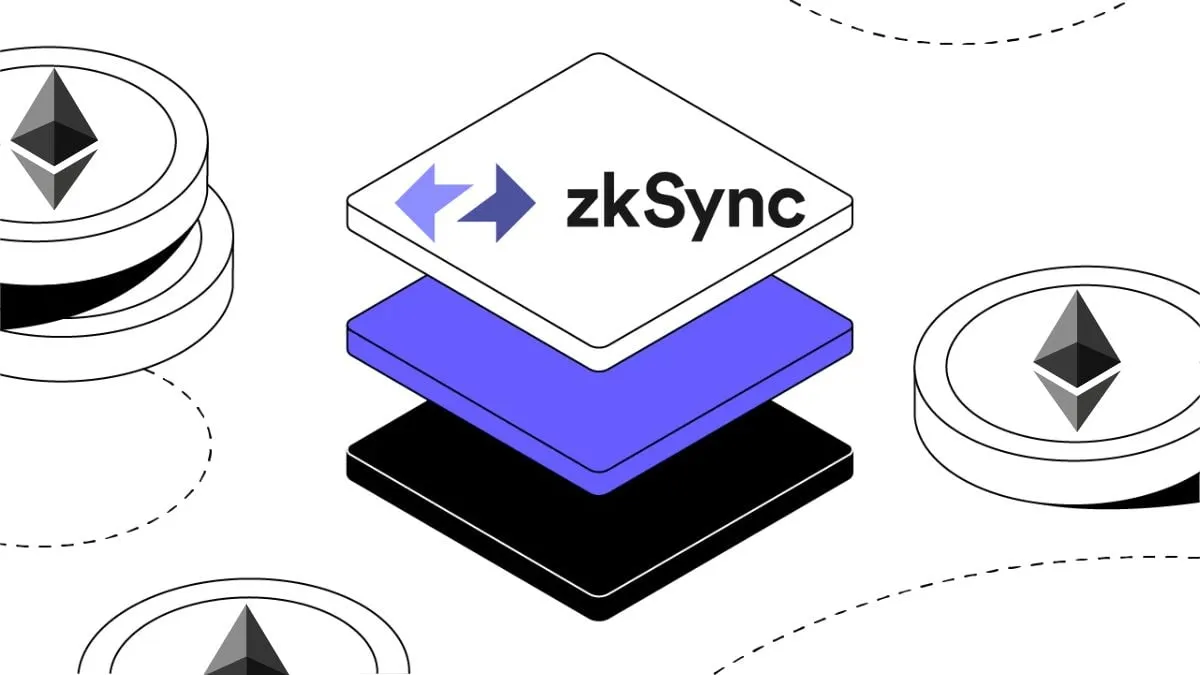What is zkSync? The L2 Blockchain.

zkSync is a Layer 2 solution for Ethereum that provides unlimited scaling and privacy. It is built on zero knowledge (ZK) rollup architecture and is designed to address the inherent drawbacks of Ethereum such as slow transactions and high gas fees due to limited throughput. Layer 2 blockchain protocols separate ownership from computation, allowing for smart contracts to hold all assets on the main chain while the off-chain component is responsible for computation and storage. As a result, zkSync provides a high transaction rate and L1 level of security, allowing users to transfer Ether and ERC20 tokens quickly and securely.
Layer 2 on Ethereum
zkSync Era is the first zero-knowledge EVM for Ethereum, launched by Matter Labs in February 2023. It is an open-source project with an MIT/Apache 2.0 license and offers developers the ability to deploy and test their dApps on the mainnet. The mainnet is currently closed to end users until Full Launch Alpha, the final milestone of zkSync Era. In the meantime, Matter Labs is actively pursuing security audits and bug bounty programs to ensure the safety and reliability of the platform. With zkSync Era, developers can take advantage of the scalability and privacy of zero-knowledge proofs to build powerful and secure dApps on Ethereum.
Matter Labs Team
Matter Labs is a Berlin-based startup that has created zkSync, the first EVM-compatible zero knowledge rollup supporting general-purpose applications in Solidity without costly gas fees and performance barriers. The startup has raised over $400 million from two dozen VC funds, crypto incubators, and investors, including the Ethereum Foundation, Dekrypt Capital, Placeholder, Dragonfly Capital, 1kx, USV, BitDAO, OKX Blockdream Ventures, and Huobi Venture. With its innovative technology, zkSync is set to revolutionize the blockchain industry and make it easier for developers to create applications on the Ethereum blockchain.
ZK rollups VS Optimistic rollups
Rollups are a type of layer 2 solution designed to increase scalability on the Ethereum blockchain. They allow for low-cost verification by rolling up many transactions into one batch and sending them all to Ethereum in one action. This reduces the amount of data that needs to be processed on the main Ethereum chain, allowing for faster and cheaper transactions. Rollups also use smart contracts to lock assets on the Layer 1 blockchain, providing an extra layer of security. With rollups, users can enjoy faster and cheaper transactions without sacrificing security.
ZK Rollups and Optimistic Rollups are two different types of Ethereum scaling solutions. ZK Rollups use zero-knowledge proofs to verify the batch of transactions and settle it as final on the Ethereum main chain, while Optimistic Rollups assume that every off-chain computation is valid unless proven otherwise. ZK Rollups have higher transaction rates and cheaper fees than Optimistic Rollups, making them a more cost-effective scaling solution. Both solutions are designed to help Ethereum scale and provide users with faster and cheaper transactions.
zkSync Features
zkSync is a Layer 2 scaling solution for Ethereum and ERC20 tokens that enables fast and cheap transfers. With a transfer fee of $0.02, a withdrawal fee of $1.59, and a one-time activation fee of $0.44, zkSync is a cost-effective way to scale transactions. It also supports gasless meta-transactions, smart contract interoperability, atomic swaps, limit orders, and native layer 2 NFTs. All of these features are open source and available to developers, making zkSync an ideal solution for crypto exchanges and other applications that require fast and cheap transactions.
It allows users to send and receive transactions faster and cheaper than on the Ethereum mainnet. It uses zero-knowledge proofs to ensure that all transactions are secure and valid. However, some users have reported slow speeds when withdrawing funds back to the L1 protocol, and dApps are less common due to the high computational power needed to prove every batch. Additionally, there is an issue of EVM compatibility, which further hinders dApps. Despite these drawbacks, ZkSync is a promising scaling solution that could help Ethereum scale and become more efficient.
Users are able to make cheap and fast transfers. It supports the majority of web3 wallets, including Metamask, Ledger, Trezor, Coinbase Wallet, Fortmatic, Portis, Keystone, KeepKey, and Torus. zkSync has brought cheaper crypto payments for millions of transfers, with over 14 million total transactions and 135 thousand verified blocks. Developers can find extensive documentation and resources to start building on the official website. The zkSync ecosystem consists of around 100 interesting projects, making it a great choice for users looking to explore the world of Ethereum scaling.
Conclusion
zkSync is a layer 2 blockchain protocol that enables fast, secure and low-cost transactions. It is a great choice for developers and gamers who want to build on the Ethereum blockchain. The zkSync ecosystem is dominated by DeFi, wallet, bridges, NFTs, and infrastructure projects. Argent, OKX Wallet, 1Inch Network, Balancer, Onto Wallet, Yearn.finance, Curve, ZigZag, Taker, Mute.io, and Reddio are some of the biggest projects onboard. Currently, zkSync doesn’t have a native token, but once it becomes fully decentralized, it will have a native token as a reward mechanism for ZK rollup operators and for staking. The zkSync AirDrop will also come with a native token.
ZkSync is a Layer 2 scaling solution for Ethereum that provides high throughput of up to 100,000 transactions per second. It is powered by Zinc, a native programming language, and offers smart contract interoperability with Solidity. Hacken auditors can analyze and review zkSync smart contracts for vulnerabilities, and the blockchain is secured with a security-first mindset and professional expertise of the leading smart contract auditor. zkSync also runs a self-hosted bug bounty program and may request the assistance of professional bug bounty platforms in the future.
